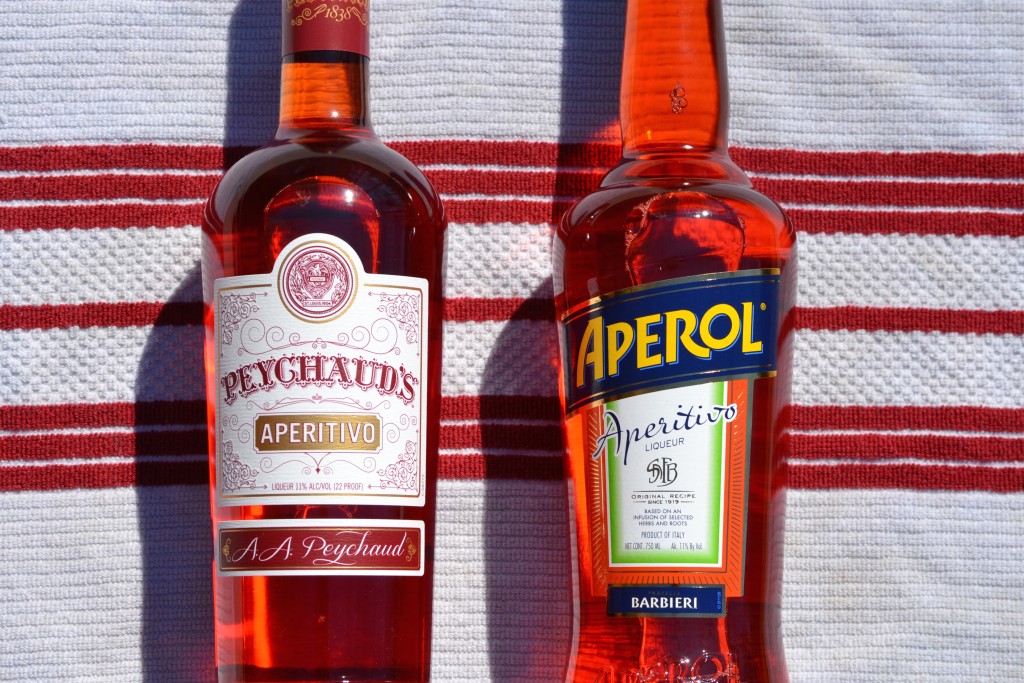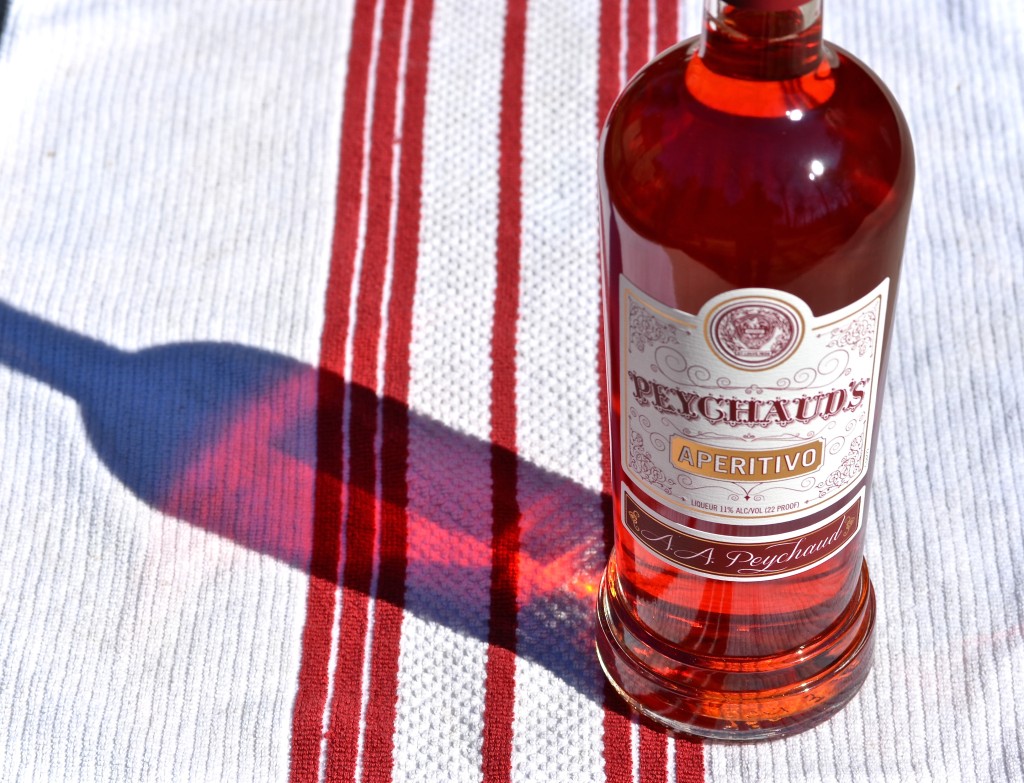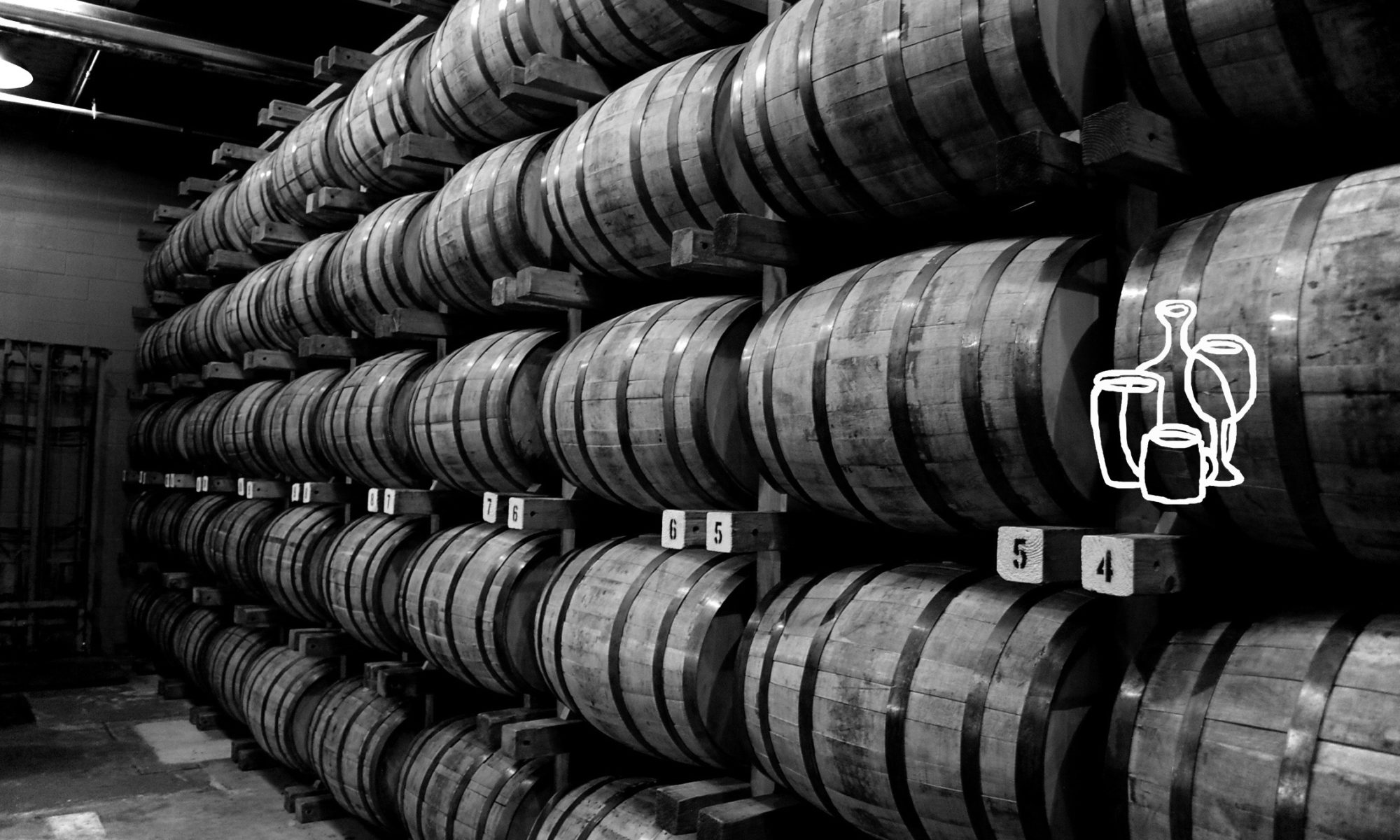
The other day, the fine folks at Sazerac Company sent me a bottle of the new Peychaud’s Aperitivo (hitting shelves this spring). Like many cocktail enthusiasts, I dig Peychaud’s bitters, especially for making Sazeracs, and I also dig Italian aperitivi like Aperol and Campari. So this new offering certainly intrigued me. Sazerac sent along a press release that was surprisingly light on details, other than stating that their new product was made with “quality, simplicity and mixability in mind.” It also noted that the Peychaud’s Aperitivo is 22 proof, which happens to be the same as Aperol (Campari clocks in at a much more robust 48 proof). The color of Peychaud’s Aperitivo in the bottle also happens to be a dead ringer for Aperol. So I started asking around as to the provenance of Peychaud’s, wondering how similar the two might be.
Sazerac’s rep replied to my questions by stating that their “recipe and production are kept proprietary.” Their bottle, though, at least confirmed – “Product of Italy” – so we at least know that much. The two biggest Italian aperitivo producers that could possibly be working with Peychaud’s are Campari and Luxardo. Luxardo, whose aperitivo also rings in at 22 proof but sports a much brighter Jolly Rancher cherry red color, quickly replied to my question on if they were making it, stating “It’s definitely not us. :).” I also asked Campari USA (who markets both Campari and Aperol), but got no response (update: Campari responded saying that they do not make the Peychaud’s). So, no telling who the actual producer is.

Before I opened the bottle, I had the inevitable thought… could it be that Peychaud’s Aperitivo is really just Aperol in a different bottle with a different label? More importantly, I suppose – would it really matter? It’s safe to say there are vodkas, whiskey, and tequilas out there that are the same juice under different brands (tequila is a particularly interesting story – since every bottle is labeled with a code indicating which of the 139 legal distilleries produced the tequila, and since there are roughly ten brands for every single tequila distillery out there). I have no beef with distilleries (or NDPs – non-distiller producers) sourcing product and marketing it – as long as they are honest about what’s inside (do a search for Michter’s, Templeton, and Whistle Pig as examples of a few whiskey brands that have gotten into some trouble on this front in the past couple years).
My suspicions were shot down, though, as soon as I poured out these two Italian beauties side by side (neat, room temperature). Once out of the bottle, the Aperol was clearly a touch darker, one tiny step towards red and away from orange. And smelling the two, there was an even more significant difference – with the Peychaud’s carrying a substantially sharper bitter/herbal base note, and the Aperol being more pleasantly fruity (citrus) and floral. Sipping them side by side, the Aperol is more lush on the tongue, with a nice viscosity. The Peychaud’s, meanwhile, is somewhat thinner, with a shorter (though still substantial) finish. If you want a more assertive profile that starts to move in the direction of Campari, the Peychaud’s will float your boat – but Aperol is generally more balanced and harmonious, more easy-drinking.
Over ice, it’s a similar story, though the ice brings out the sweetness in the Aperol. In a spritz (with club soda and/or sparkling wine), the distinctions are understandably harder to pinpoint, but the conclusion remains the same – if you’re after a pleasant walk through Italian orange groves, go with the Aperol; and if you want a (mild) slap in the face to wake you up a bit, go for the Peychaud’s. Peychaud’s Aperitivo should be hitting shelves this spring, and is priced similarly to Aperol, around $20.
I should point out – the Peychaud’s Aperitivo is nothing like the complex spice bomb that their bitters provide. Sure, there are cinnamon and clove notes in there, but those are a minor note in the Aperitivo rather than the booming crash that the bitters provide (speaking of which, make yourself a Bitter Southerner No. 2 for an amazing use of Peychaud’s Bitters).
I appreciate that Peychaud’s want to keep an air of mystery about their new product, but I’d still love to know who is making this stuff, or at least a bit more on the formula. And if indeed it is the same folks behind Aperol or Casoni that are making this, I’d love to know a few hints as to how their formulations differ. Is that too much to ask? Maybe so. I’ll just go back to my spritzes and Americanos and Negronis and try not think too hard about what’s in the glass.



